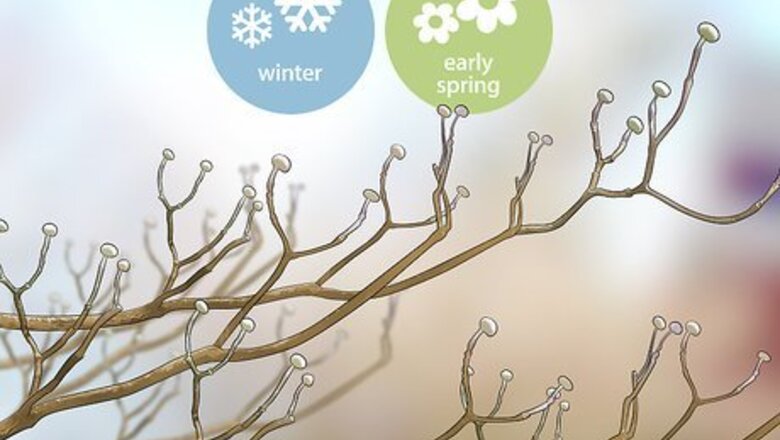
views
- Prune dogwood branches in late winter or early spring, when the tree is dormant and not actively growing.
- Cut off dead wood, or branches that are discolored or affected by rot or disease. Also clip off old, twiggy stems, and thin out crowded areas of branches.
- Snip away flower buds on the tip of the branch to redirect energy to growing other, more plentiful buds elsewhere on the branch.
Primary Pruning
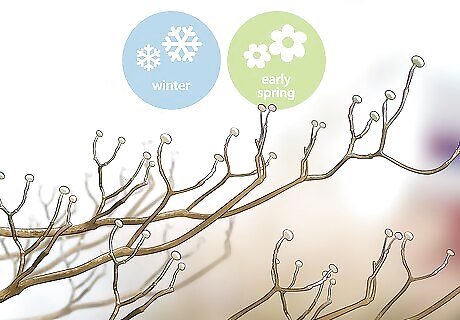
Remove branches during the winter or early spring. The dogwood should still be in a dormant state when you remove branches. Sawing or otherwise removing branches during the late spring or summer, after the tree begins to actively grow, can create fresh, appealing entry spots for insects that like to bore into the wood of the tree.
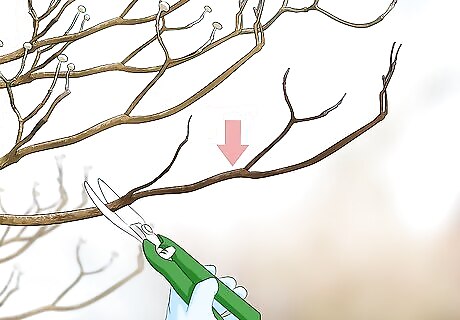
Remove deadwood. Wood that is dying or dead will do nothing good for your tree. In fact, leaving it on the tree may actually cause problems. Deadwood is more likely to grow mold or other fungi, which can then spread to healthy parts of the dogwood.
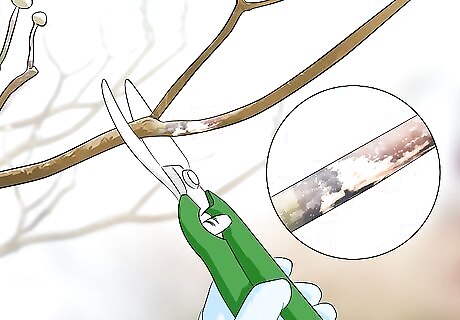
Cut off diseased or insect-infested branches. Like dead branches, diseased branches will only invite further infection to the rest of your dogwood. When cutting off noticeably diseased branches, you should dip the shears or saw into a solution made of one part bleach and three parts water to sterilize them. Otherwise, you may accidentally spread the disease to other parts of the tree.
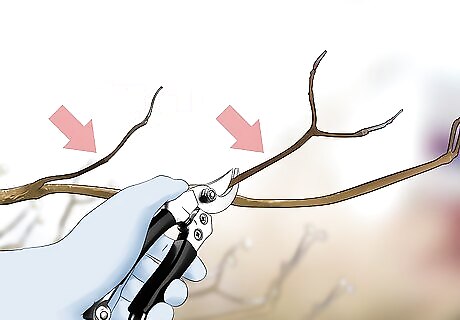
Prune away old, twiggy stems. Some dogwood varieties, particularly the shrubby types, are valued mostly for the colorful bark that grows on new stems. You can either cut back the old stems on these dogwoods or cut them down completely. For shrubby dogwoods, you can actually cut the dogwood down to the ground every few years to remove old stems and encourage the growth of new twigs.

Thin out crowded areas. If a particular section of your dogwood tree seems abnormally thick or crowded, select the weakest branches from that spot and cut them back to their point of origin. Thinning out crowded areas can help open up the tree canopy and allow for better air circulation.
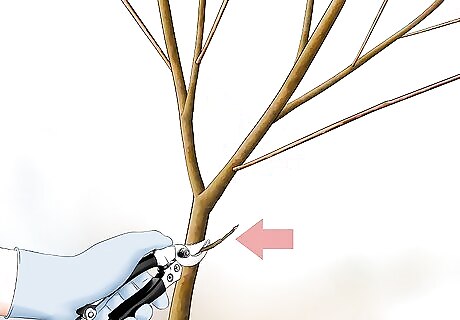
Remove shoots that grow below the graft point. Some hybrid or variegated dogwood varieties are created by grafting together two separate dogwood trees. A branch that grows beneath the grafting point will have characteristics of one of the original trees used for the hybrid, rather than the hybrid dogwood itself. To keep the foliage and appearance of the tree consistent, you should remove these unexpected branches by sawing or pruning them off at the point of origin.
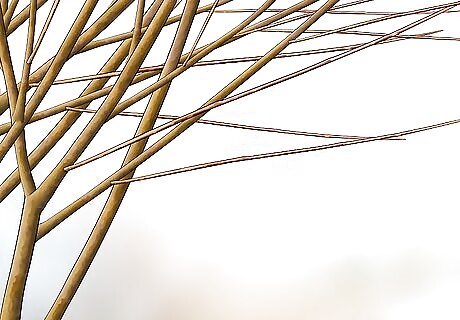
Determine whether or not you need to remove lower branches. Sometimes, the lowest branches of the dogwood can interfere with walking or other gardening activities. Other times, the branches hang so low that the underside of the tree does not receive enough air. In either case, the lowest branches can be sawed off or cut away with heavy-duty shears.
Secondary Pruning

Snip away the flower buds. Cut off the buds at the tip of each branch to redirect energy to buds on the side of the branch. By removing a singe bud, you encourage the development of multiple buds, leading to a fuller setting of flowers. These buds can either be snipped off with shears or pinched off by hand.
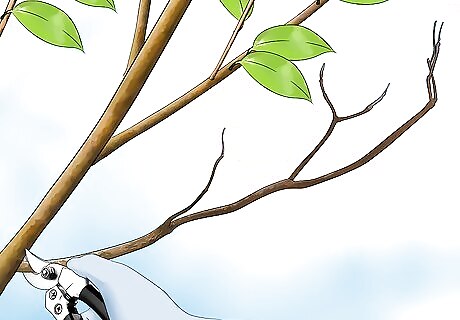
Prune your dogwood to encourage flowering in early summer. June is generally considered the best month for this type of pruning, but any time in the early summer will work. You should not snip buds off during the dormant season since doing so will cut the flowers off before they have the chance to open, rather than simply redirecting the energy. Do not wait too late into the summer, though, because doing so will not allow the buds to build up enough energy for new shoots and buds for the next year.




















Comments
0 comment